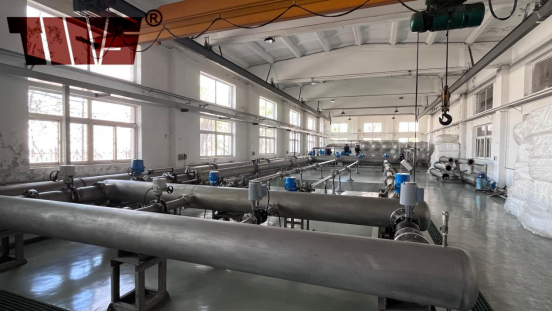With the rapid development of technology and innovation, valuable information that should be passed on to industry professionals is often overshadowed today. While shortcuts or quick methods can be a good reflection of short-term budgets, they demonstrate a lack of experience and an overall understanding of what makes the system viable in the long run.
Testing Platform IN TWS Factory
Based on these experiences, here are 10 common installation myths that are easy to overlook:
1. The bolt is too long
The bolt on the valve has only one or two threads that exceed the nut. The risk of damage or corrosion can be reduced. Why buy a bolt longer than you need? Often, the bolt is too long because someone does not have time to calculate the correct length, or the individual simply does not care what the final result looks like. This is lazy engineering.
2. The control valve is not isolated separately
While isolating valves takes up valuable space, it is important that personnel are allowed to work on the valve when maintenance is required. If space is limited, if the gate valve is considered too long, at least install a butterfly valve, which takes up hardly any space. Always remember that for those who must stand on it for maintenance and operation, using them is easier to work and carry out maintenance tasks more efficiently.
3. No pressure gauge or device installed
Some utilities like calibration testers, and these facilities usually do a good job of connecting inspection equipment to their field personnel, but some even have interfaces for mounting accessories. Although not specified, it is designed so that the actual pressure of the valve can be seen. Even with supervisory control and data acquisition (SCADA) and telemetry capabilities, someone at a certain point will be standing next to the valve and need to see what the pressure is, and that’s so convenient.
4. The installation space is too small
If it is a hassle to install a valve station, which may involve excavating concrete, etc., do not try to save that cost by making it as much as possible to install space. It will be very difficult to carry out basic maintenance at a later stage. Also keep in mind that tools can be long, so you must set a space reservation so that you can loosen the bolts. Some space is also needed, which allows you to add devices later.
5. Post-disassembly is not considered
Most of the time, installers understand that you can’t connect everything together in one concrete chamber without some type of connection to remove parts at some point in the future. If all the parts are tightened tightly and there is no gap, it is almost impossible to separate them. Whether grooved couplings, flange joints or pipe fittings, they are necessary. In the future, parts may sometimes need to be removed, and while this is usually not a concern for the installation contractor, it should be a concern for owners and engineers.
6. Concentric reducer horizontal installation
This may be nitpicking, but it’s also worth paying attention to. Eccentric reducers can be installed horizontally. Concentric reducers are mounted on a vertical line. In some applications it is necessary to install on the horizontal line and use an eccentric reducer, but this problem usually involves cost: concentric reducers are cheap.
7. Valve wells that do not allow drainage
All rooms were wet. Even during valve start-up, water falls on the floor at a certain point when air is discharged from the bonnet. Any one in industry has seen a flooded valve at any time, but there really is no excuse (unless, of course, the whole area is submerged, in which case you have a bigger problem). If it is not possible to install a drain, use a simple drain pump, assuming a power supply. In the absence of power, a float valve with an ejector will effectively keep the chamber dry.
8. Air is not excluded
When the pressure drops, the air is discharged from the suspension and transferred to the pipe, which will cause problems downstream of the valve. A simple bleed valve will get rid of any air that may be present and will prevent problems downstream. The bleed valve upstream of the control valve is also effective, as the air in the guide line can cause instability. Why is the air not removed before it reaches the valve?
9. Spare tap
This may be a minor issue, but spare taps in the chambers upstream and downstream of the control valve always help. This setup facilitates future maintenance, whether it’s connecting hoses, adding remote sensing to control valves, or adding pressure transmitters to SCADA. For the small cost of adding accessories at the design stage, it significantly increases usability in the future. This makes the maintenance task more difficult, since everything is covered with paint, so it is impossible to read the nameplate or make adjustments.
Tianjin Tanggu Water-Seal Valve Co.,ltd mainly produce resilient seated Butterfly Valve, Gate Valve ,Y-Strainer, Balancing Valve, check valve, Back flow preventer.
Post time: May-20-2023


